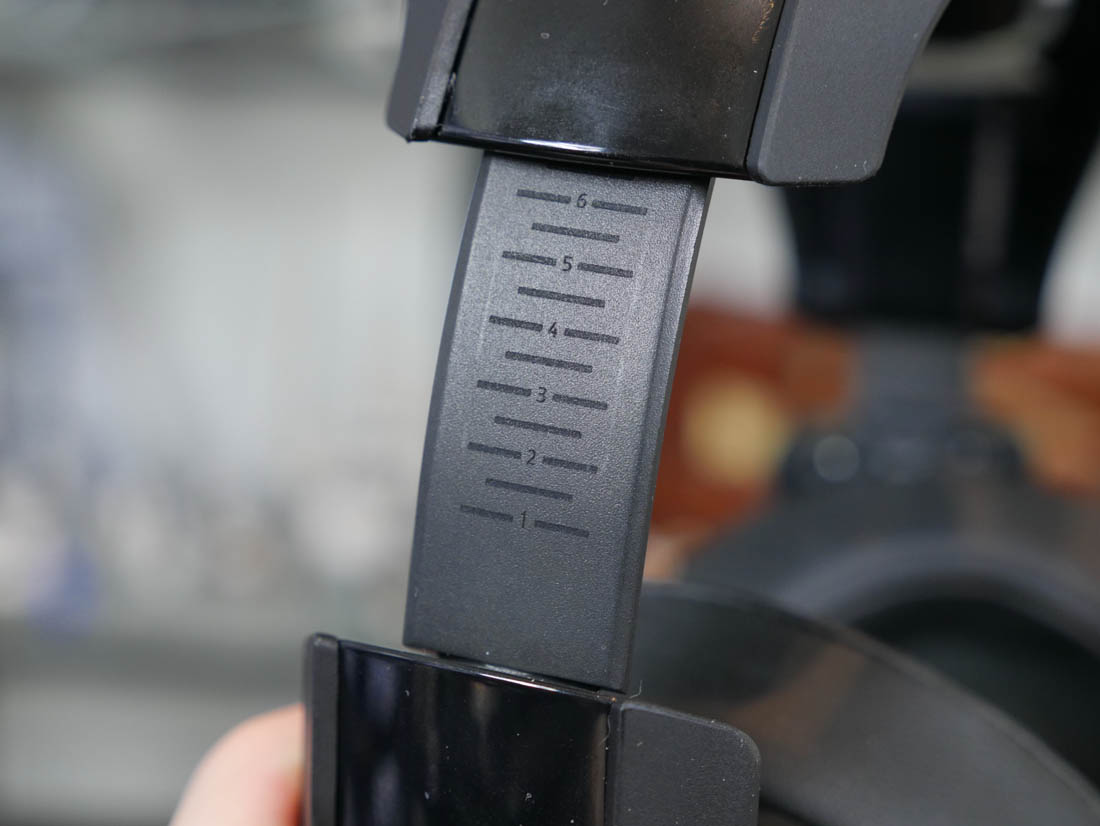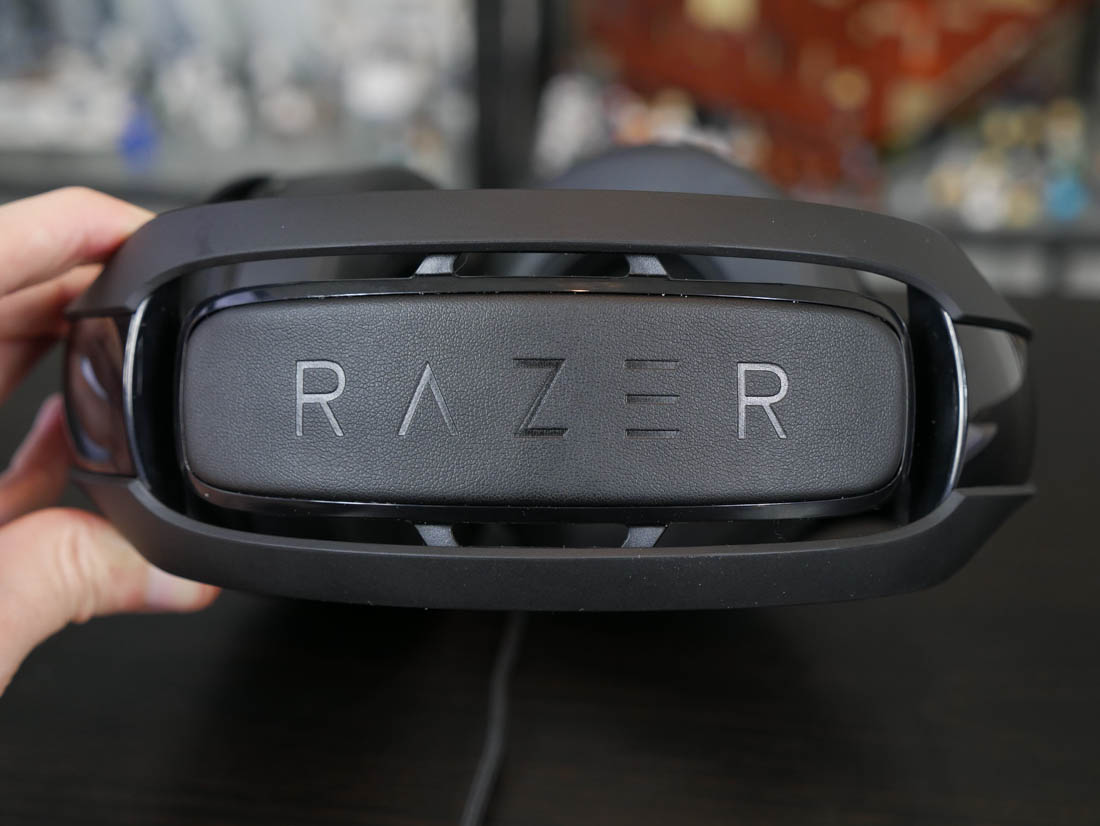The Razer ManO'War originally hit the market in 2016 as a premium wireless headset for gamers, complete with LED lighting and virtual 7.1 surround sound. This year, Razer has released a new version of the ManO'War that ditches wireless connectivity bringing the same technology down to a lower price point.
At $120, the ManO'War Wired sits in the same price bracket as other top-tier wired headsets such as the HyperX Cloud Revolver and the Logitech G633. If you don't require wireless connectivity, which adds an extra $50 to the price, this could be a great option to consider, though it does face stiff competition in the gaming headset market.
The ManO'War wired edition uses largely the same design as the wireless version. The volume controls and mic mute buttons have moved from the earcups themselves, to a small dongle on the wire, making them easy to reach during your gaming sessions. The volume control wheel is slick and the control dongle is small and less cumbersome than some competing headsets.
The ManO'War wired also ditches RGB lighting on each earcup. Instead, the Razer logo is an understated black outline on the matte plastic earcups, which keeps the headset from looking outlandish. There's also a "limited edition" green variant that swaps out the black logo for Razer's signature acid green.
I'm not a fan of the ManO'War's general design. This headset is enormous, particularly the huge circular earcups with copious padding and large plastic surrounds. It's approaching the point of being too cumbersome, and it's certainly much larger than more neatly-designed headsets like the Cloud Revolver.
At times, it felt a bit ridiculous to wear something this large on my head, however I imagine some gamers will appreciate the massive, circular design used here. In fact two other TechSpot writers particularly liked the circular padded design of the Razer, go figure.
Aside from the padded sections, essentially all of the ManO'War is constructed from plastic. Some areas are matte, some areas are glossy, and there's even a faux-leather textured area, but all are black plastic. This doesn't make the ManO'War feel particularly premium, especially up against other headsets that use some metal segments.
The ManO'War features three areas of articulation. The headset frame loops around each earcup and attaches in two points, allowing the earcups to rotate up and down slightly to fit better on your ears. Each earcup mount is height adjustable and rotates in a horizontal axis as well, all of which makes the headset fit reasonably well to a wide variety of heads.
One thing I worry about with the all-plastic construction is the rigidity of these articulation points and the headset as a whole. The head strap is very flexible and some of these adjustable points don't feel particularly solid. The padding section on the headband, which is the main point of contact to your head, is only attached to the rest of the headset with four small plastic elements. Judging by reports from people who've purchased both the wired and wireless versions of the ManO'War through Amazon, some of these sections are prone to breaking, which is disappointing on a headset that costs more than $100.
The padding on the ManO'War consists of a small amount of foam on the headband, and a massive amount of foam around the earcups, each covered with leather-like material. The ManO'War is reasonably comfortable, but I'd like to see a lot more padding around the headband to give it more comfortable support.
The HyperX Cloud Revolver, for example, uses a ton of padding around the headband as well as a suspension system that makes it more comfortable to wear for extended periods.
With that said, using the ManO'War for a long gaming session didn't lead to any head fatigue, though the significant amount of padding around the ears did make it somewhat warm to wear. Sound isolation provided by the over ear design is okay, but if you're using the headset in a loud environment, the foam padding is unlikely to block out everything unless you're blasting audio yourself. This is typical of most over ear headsets that lack active noise cancellation, a feature practically never seen at this price point.
While I wasn't hugely impressed with the build of the ManO'War, the sound quality is very good. I wouldn't class myself as an 'audiophile', but I did appreciate the balanced audio provided by this headset. No single area of the sound profile seemed overpowering, and I appreciated the amount of bass. Some gaming headsets push the bass up to the maximum for ridiculous explosions, but this isn't an issue with the ManO'War.
One of the better aspects to the ManO'War's audio quality is the lack of painful distortions at high volumes. Some headsets push accentuated vocals or piercing high tones when you crank the volume to the maximum, but this is less prevalent than usual with the ManO'War. There are still some distortions when you crank up the volume, though the headset performs very well in general here.
Audio quality seems slightly better than the HyperX Cloud Revolver, though both headsets provide great audio. Razer also provides an equalizer in their Synapse software that makes it very easy to tune the sound profile to your liking, and with some minor tweaks you can make this headset sound even better than its 'flat' profile out of the box.
One of the headlining features of the ManO'War is its virtual 7.1 surround sound, provided by the included USB dongle. Normally the headset connects to your PC or device through a standard 3.5mm TRRS connector, but this connector can be inserted into the USB dongle for surround support. After the dongle is attached to your PC, the ManO'War appears as an eight-channel sound device to games and applications.
Razer's 7.1 surround sound implementation is superior to a number of other solutions I've tried, particularly after you calibrate the headset using the utility in Synapse. When each channel is properly tuned for the best directionality, the ManO'War provides a surprisingly good surround sound experience for a pair of headphones.
Sounds moving from the sides to the front are excellent, and although rear audio channels still feel like they are above my head rather than behind at times, overall I was impressed with the headset in this regard.
One of the great benefits of Razer's solution is that sound quality isn't degraded when you move from a stereo to surround sound output. This means you don't need to constantly switch the surround sound mode on and off, which can get annoying on other headsets as the 'surround mode' tends to make music sound like garbage.
In fact, there's no surround mode on the ManO'War: when the USB dongle is used, the headset is primed for surround audio, and you can't disable any surround sound processing. As this headset sounds great in all conditions with surround processing enabled, this isn't a problem, and for those that really want to disable the feature, you can connect the headset to your PC through the 3.5mm plug.
The microphone included with the ManO'War is retractable, so you can neatly tuck it away inside the headset when you don't need it. The quality of the microphone is great, providing crisp and clear vocals, though it's only suited to in-game chat and video calls. If you were planning to use the headset for podcasting or a similar task, the strong noise reduction, compression and lack of low end reproduction may not produce the high-quality audio you're after.
Audio quality is where the Razer ManO'War wired edition shines, and it's nice that you can get the same audio experience as the wireless variant for less.
Even the virtual 7.1 surround sound is decent, which is surprising considering what I've seen in the past. However, the build quality of the headset is questionable, and the massive design definitely isn't for everyone.
Shopping shortcuts:
If great sound quality is your only desire, the ManO'War is a decent choice at $120. But if you want a more rounded, comfortable package, I'd perhaps steer towards the HyperX Cloud Revolver instead.
score
Pros: Great audio quality. Surprisingly decent virtual 7.1 surround sound, with a handy calibration utility. Crisp, clear microphone. Wired saves you $50.
Cons: The headset is massive and of questionable build quality: I want something more sturdy and 'premium' for the price.







